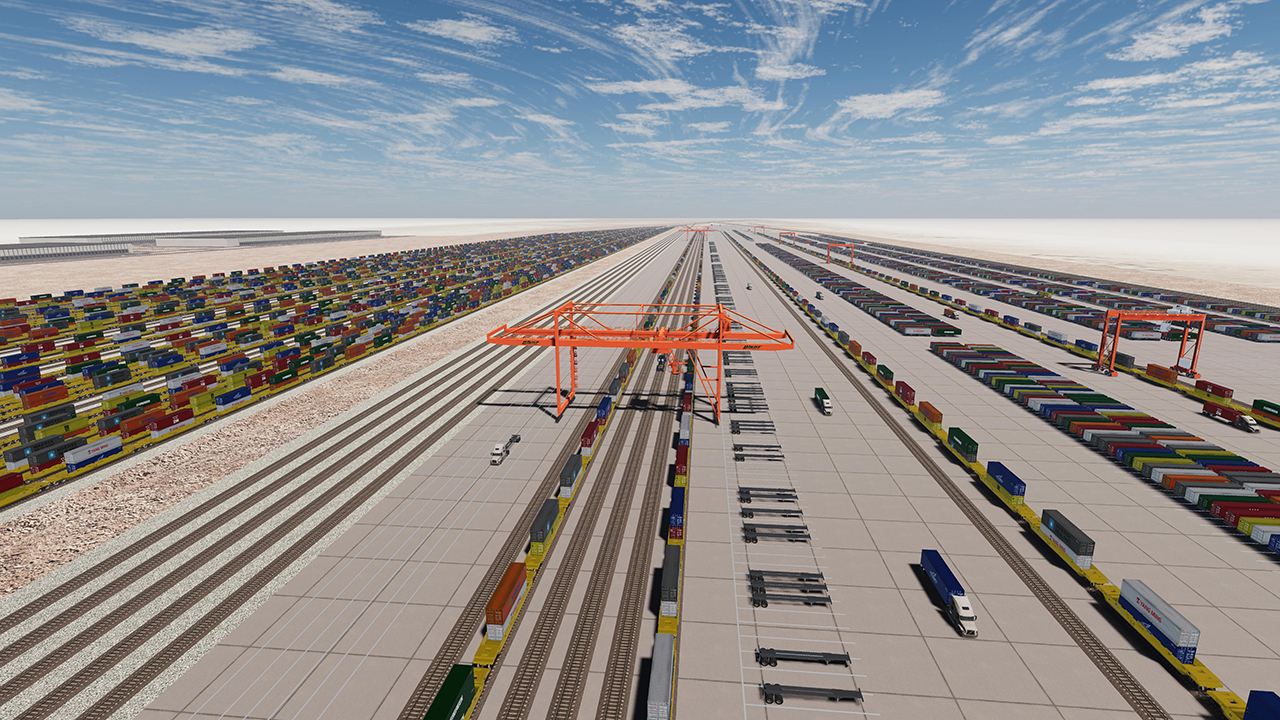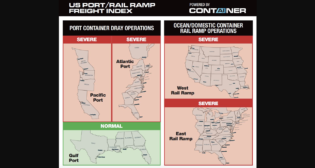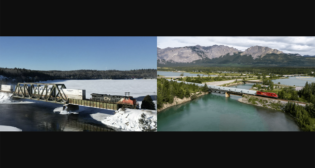
BIG Reason to Blow Up CARB’s Unrealistic ‘In-Use Locomotive Rule’
Written by William C. Vantuono, Editor-in-Chief
Preliminary conceptual rendering of Barstow International Gateway. BNSF illustration.
Report from California, courtesy of the Victorville Daily Press: “Barstow Leaders Rally Legislative Support to Save BNSF’s $1.5 Billion Railway Project,” the headline read. “Barstow city leaders traveled to Sacramento to gain legislative support for construction of BNSF’s Barstow International Gateway (BIG) project. Construction of the $1.5 billion state-of-the-art rail facility is in jeopardy of being halted by a state rule (the “In-Use Locomotive Rule”) mandating BNSF use ‘zero-emissions’ (ZE) or all-electric locomotives by 2035.
Is BIG in big trouble because the California Air Resources Board (CARB) wants to snuff out diesel locomotive exhaust, which accounts for an almost negligible 1% of all GHG (greenhouse gas) emissions nationally? Force BNSF—and all other railroads operating in the state—to move, within a few years, to ZE motive power—battery-electric, HFC (hydrogen fuel cell) or catenary-electric—which is either a) in its very early stages, in limited test-case use in captive environments (like Pacific Harbor Line, where an EMD Joule unit is deployed as a switcher), or b) impossible for an intermodal operation, for the simple, shocking reason that 25Kv AC catenary, lift cranes and double-stack containers don’t mix too well?
Seems to me that the folks at CARB have been inhaling smoke from funny cigarettes while trying to cut down on other types of smoke. There’s nothing inherently wrong with cutting diesel locomotive exhaust emissions, but let’s be practical. Would CARB rather see all that intermodal traffic shift from rail to truck? What would that do to emissions in the State of California? And even if all the big trucks running on California’s highways were to go 100% electric (which they won’t in the foreseeable future), what about traffic congestion and pavement/bridge damage?
I’m sure the appeals to the U.S. EPA and the involvement of the AAR, ASLRRA and other concerned groups describe everything I’ve pointed out above in greater detail, but all stakeholders need to join forces to throw gasoline (or ethanol) on this pending CARB rule and light it up with a blowtorch. Up in smoke, as they say!
BNSF’s BIG team and Barstow city officials met with leadership from California’s Labor/Workforce Development, State Treasurer, Office of Planning and Research and Strategic Growth Council, State Transportation Authority, Department of Consumer Affairs and Housing and Workforce Development Board offices to relay some common sense. Following the meeting, Barstow Interim City Manager Andrew Espinoza Jr. said that the response from state officials was “overwhelmingly positive” … the group “gained a number of allies for our fight,” and that the battle with CARB is “not completely over but we are gaining ground“ and ”moving full speed ahead with this project.”
At the 11th annual High Desert Economic and Real Estate Symposium & Forecast at the Victor Valley College Performing Arts Center in Victorville, BNSF Public Affairs Executive Director Lena Kent delivered a talk the Victorville Daily Press said “shocked” the audience, “drawing gasps.”
“I hate to tell everybody this, although we’ve been doing our best to test out electric locomotives, we do not have an electric locomotive that works,” Kent said. “It’s an impossible task for us to be able to do.” She noted that by 2030, BNSF locomotives that are 23 years or older won’t be allowed to operate in California under the rule, even if they have been rebuilt with new prime-movers that meet current EPA standards (typically, Tier 3). “We let the state know if that were to go through and be implemented, BNSF would not be able to build this project—finances would not be feasible and we don’t even know how much we’d be able to operate in the state of California,” Kent added. “The final kicker is, starting in 2026, both BNSF and Union Pacific will be required to put up to $800 million each year into a fund that CARB will manage, and when electric locomotives are available to be purchased, they’ll be able to go out and purchase them.”
I don’t see anything shocking or gasp-eliciting about what Kent said. It’s the plain, simple truth. Besides, the BIG project is subject to the California Environmental Quality Act (CEQA). What more does CARB need than that?
If this rule stays, its effect “would be devastating in various ways,” the Victorville Daily Press quoted BNSF as saying:
- “The supply chain would suffer without new rail projects that improve efficiency, increasing costs for shippers and consumers.
- “It will slow the transition to lower-emission locomotives.
- “Highway congestion and emissions will increase because of a shift away from rail.
- “Elimination of thousands of well-paying jobs and supply chain efficiencies” will occur.
BNSF says the CARB rule is “an ineffective and unachievable patchwork approach to locomotive regulation,” and urges those opposed to “support more collaborative measures that accelerate commercial viability of lower- and zero-emission locomotives.”





